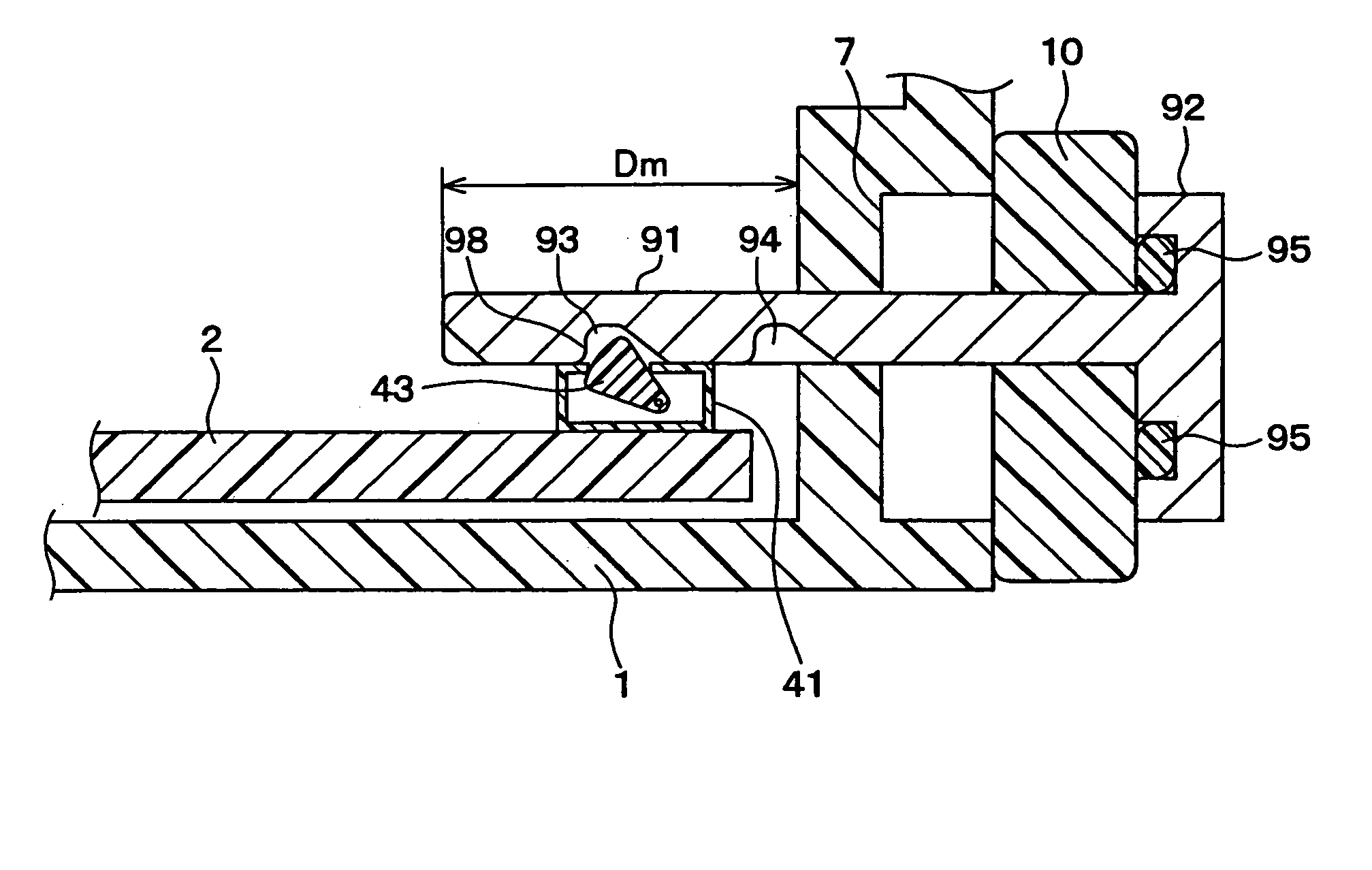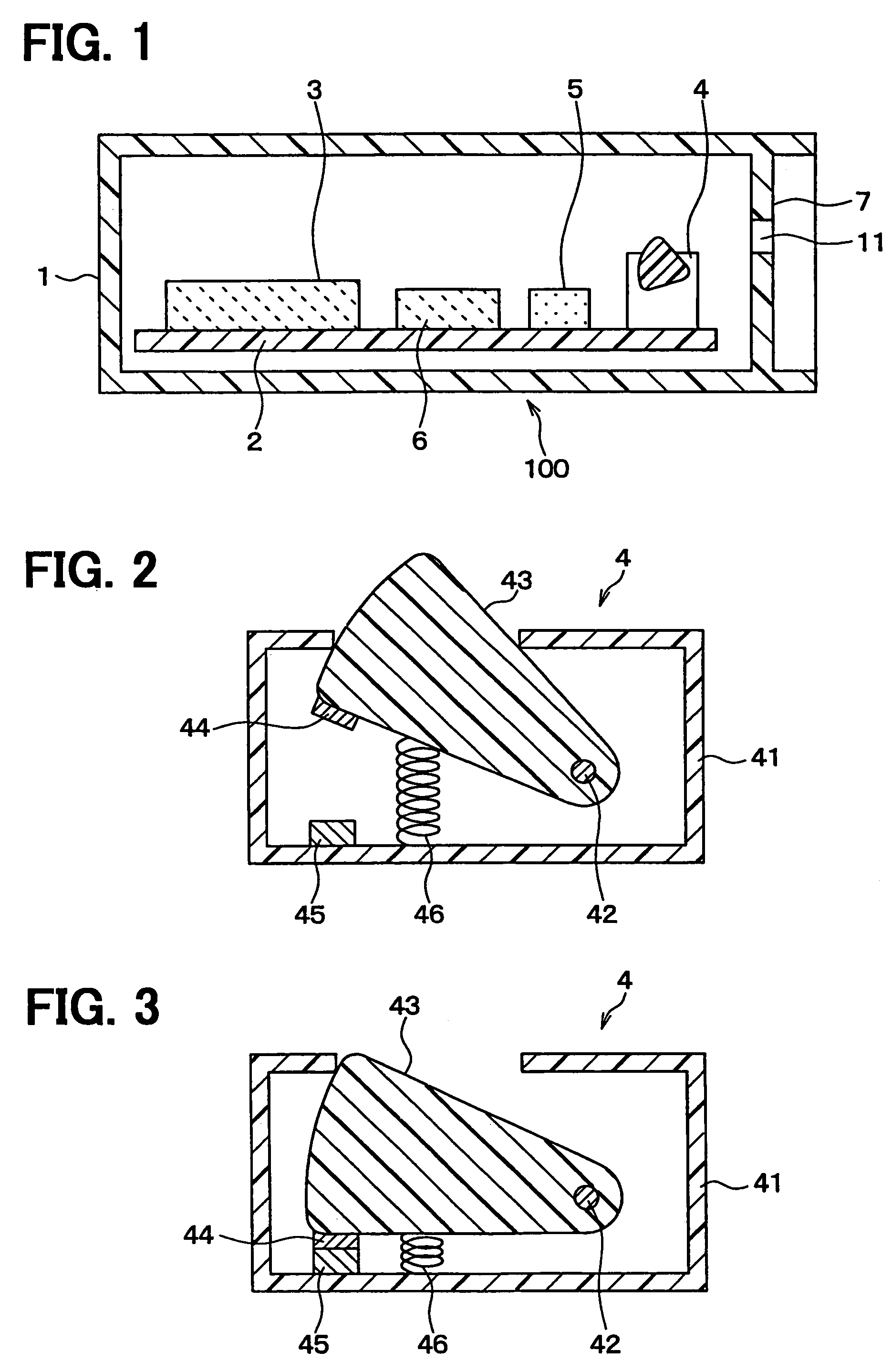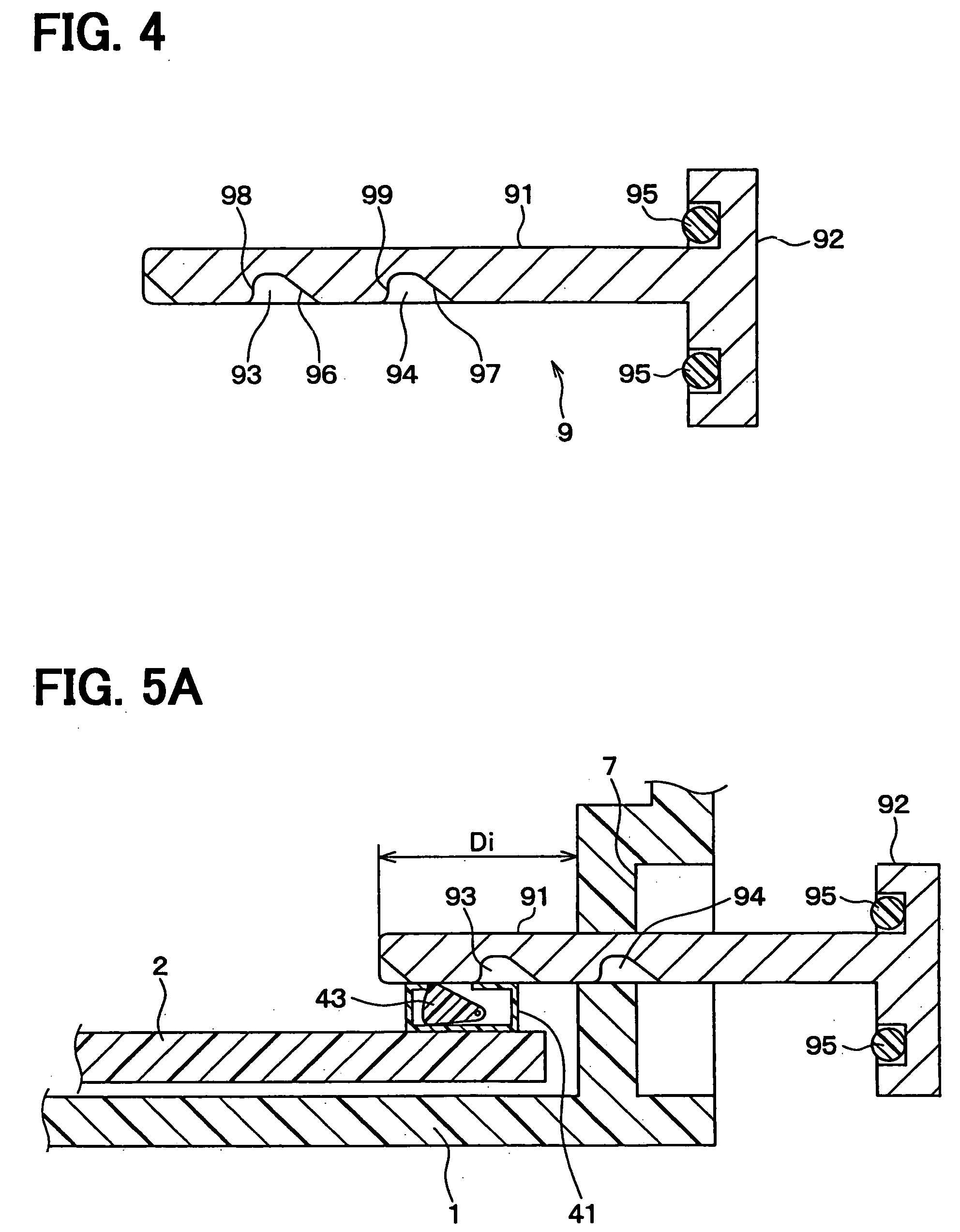Wireless device having a battery selectively activated
a wireless device and selective activation technology, applied in the direction of electrical switches, contact mechanisms, electrical equipment, etc., can solve the problems of consuming vain battery power, affecting the service life of wireless devices, and requiring a considerable long time after the wireless device, so as to prevent the battery power of wireless devices
- Summary
- Abstract
- Description
- Claims
- Application Information
AI Technical Summary
Benefits of technology
Problems solved by technology
Method used
Image
Examples
Embodiment Construction
[0022]A first embodiment of the present invention will be described with reference to FIGS. 1–4. A wireless device 100 is mounted on a license plate of an automobile or installed in the vicinity of the license plate. The wireless device 100 is shaped in a rectangular box (e.g., 40 mm×40 mm×15 mm). FIG. 1 shows a cross-sectional view, assuming that the left side in FIG. 1 is the front side of the wireless device 100. The wireless device 100 wirelessly transmits information such as a license number and a vehicle identification number to a roadside device.
[0023]Components of the wireless device 100 are contained in a casing 1. A wireless circuit 3, a memory 6, a battery 5 and a switch 4 mounted on a substrate 2 are all contained in the casing 1. The casing 1 is made of a resin or metallic material. At the rear end of the casing 1, a hole 11 (e.g., 2 mm square) and a depressed portion 7 surrounding the hole 11 are formed. The depressed portion 7 is cylinder-shaped (viewed from the rear ...
PUM
 Login to View More
Login to View More Abstract
Description
Claims
Application Information
 Login to View More
Login to View More - R&D
- Intellectual Property
- Life Sciences
- Materials
- Tech Scout
- Unparalleled Data Quality
- Higher Quality Content
- 60% Fewer Hallucinations
Browse by: Latest US Patents, China's latest patents, Technical Efficacy Thesaurus, Application Domain, Technology Topic, Popular Technical Reports.
© 2025 PatSnap. All rights reserved.Legal|Privacy policy|Modern Slavery Act Transparency Statement|Sitemap|About US| Contact US: help@patsnap.com



